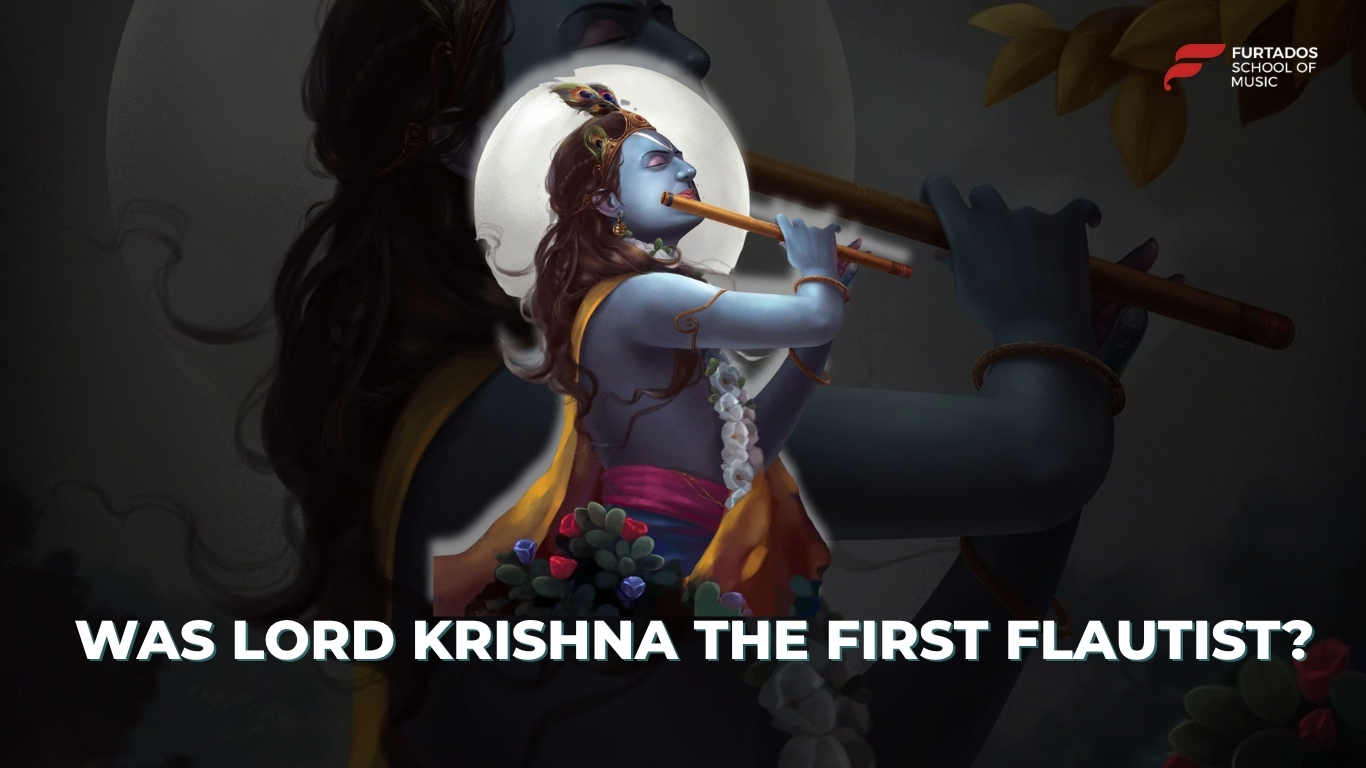Few images are as iconic and peaceful as that of Lord Krishna and the flute. The divine cowherd, with his peacock feather and charming smile, playing soulful tunes on his bansuri under the shade of a Kadamba tree—it’s a picture etched into Indian culture. But was Lord Krishna truly the first flautist? Or does the history of flute in India go even deeper than mythology?
Let’s dive into the magical world of the bansuri, and separate legend from legacy.
Lord Krishna and the Flute: A Mythological Marvel
In Indian mythology, Lord Krishna and flute are inseparable. The sound of his flute could mesmerize not just the gopis (milkmaids), but also animals, birds, rivers, and even stones. It wasn’t just music—it was divine energy in motion.
For centuries, Krishna has been celebrated as the ultimate flautist, not necessarily because he invented the instrument, but because he transformed the flute into a spiritual medium. The bansuri in Krishna’s hands symbolized love, harmony, and the connection between the divine and the mortal world.
History of Flute in India: Beyond the Myths
While Krishna’s stories date back thousands of years through sacred texts like the Bhagavata Purana, archaeological findings suggest that flutes existed even before the Vedic period.
The history of flute in India reveals that simple bamboo flutes were used in early tribal music and later evolved into classical instruments. Sculptures from ancient temples across India—such as in Sanchi and Amaravati—depict flautists playing transverse flutes, much like today’s bansuri.
So while Krishna might not be the “first flautist” historically, he undoubtedly holds the title of the most influential one in Indian culture.
Origin of Bansuri: A Sound from the Soul
The origin of bansuri is deeply rooted in Indian soil. Crafted from a single piece of bamboo with six or seven finger holes, the bansuri is one of the oldest known musical instruments. It requires no strings or reeds—just the breath of the player and the soul of the music.
It’s said that the sound of the bansuri resonates with the energy of nature. This might explain why the flute is universally acknowledged as one of the most calming, de-stressing, and spiritually uplifting instruments in existence.
The Healing Power of the Flute
Modern studies support what ancient listeners always knew. The flute’s melodies calm the mind, regulate breathing, reduce anxiety, and enhance focus. Whether played live or heard in recordings, flute music has the power to create a serene atmosphere and attract positive vibrations.
In fact, many parents today seek flute lessons for their children not just for musical learning, but for its emotional and psychological benefits.
Learn the Flute with Furtados School of Music (FSM)
If your child is drawn to the soulful sound of the flute, the Furtados School of Music offers structured, inspiring, and holistic training. FSM’s flute courses are designed for beginners to advanced learners, blending traditional techniques with modern methods.
What makes FSM special?
- Expert and passionate flute instructors
- Performance-based learning with real milestones
- Personalized attention in small group or one-on-one settings
- Opportunities to perform and grow in a creative environment
FSM is not just a place to learn notes—it’s where students learn expression, discipline, and confidence.
Why Parents Trust FSM
Parents trust FSM for its legacy in music education, its safe and nurturing environment, and its proven track record in nurturing musical talent. The institute doesn’t just teach music—it helps students fall in love with it.
Final Notes: Myth and Music Intertwined
So, was Lord Krishna the first flautist? Historically, maybe not. Spiritually? Absolutely. His association with the bansuri helped elevate this humble bamboo instrument into a symbol of peace, beauty, and divine connection.
Today, through institutes like FSM, the legacy of the flute continues—not just as an instrument, but as a timeless medium of expression and joy.
